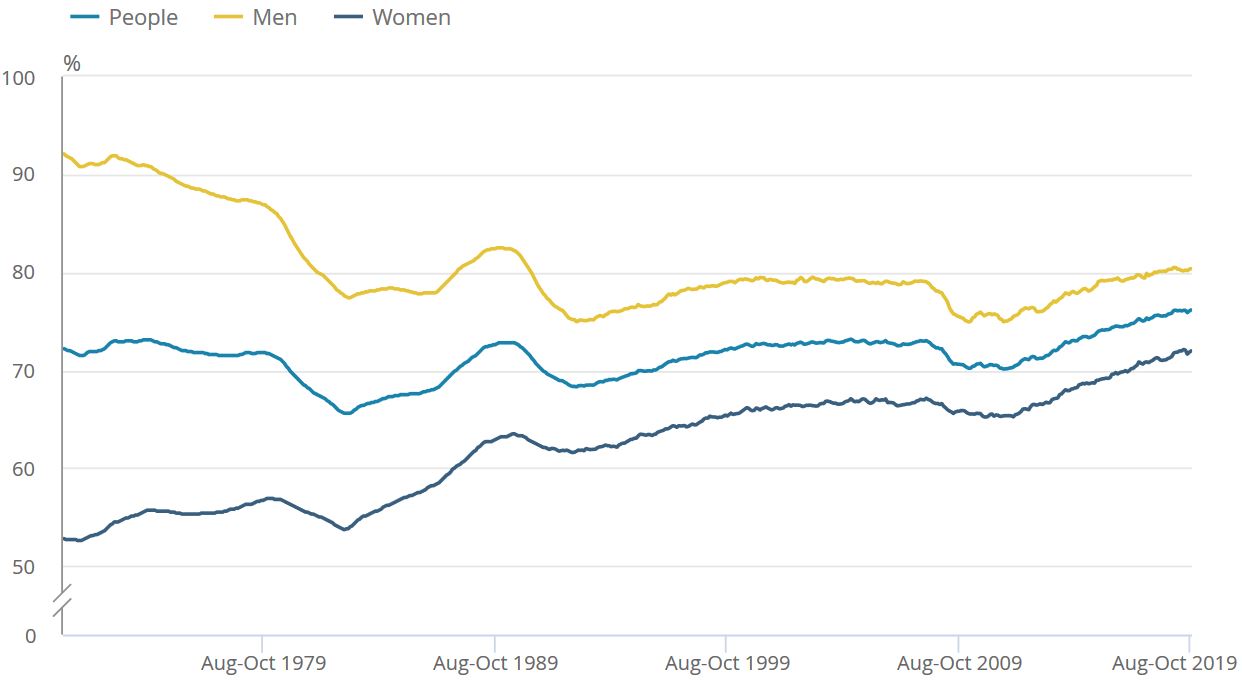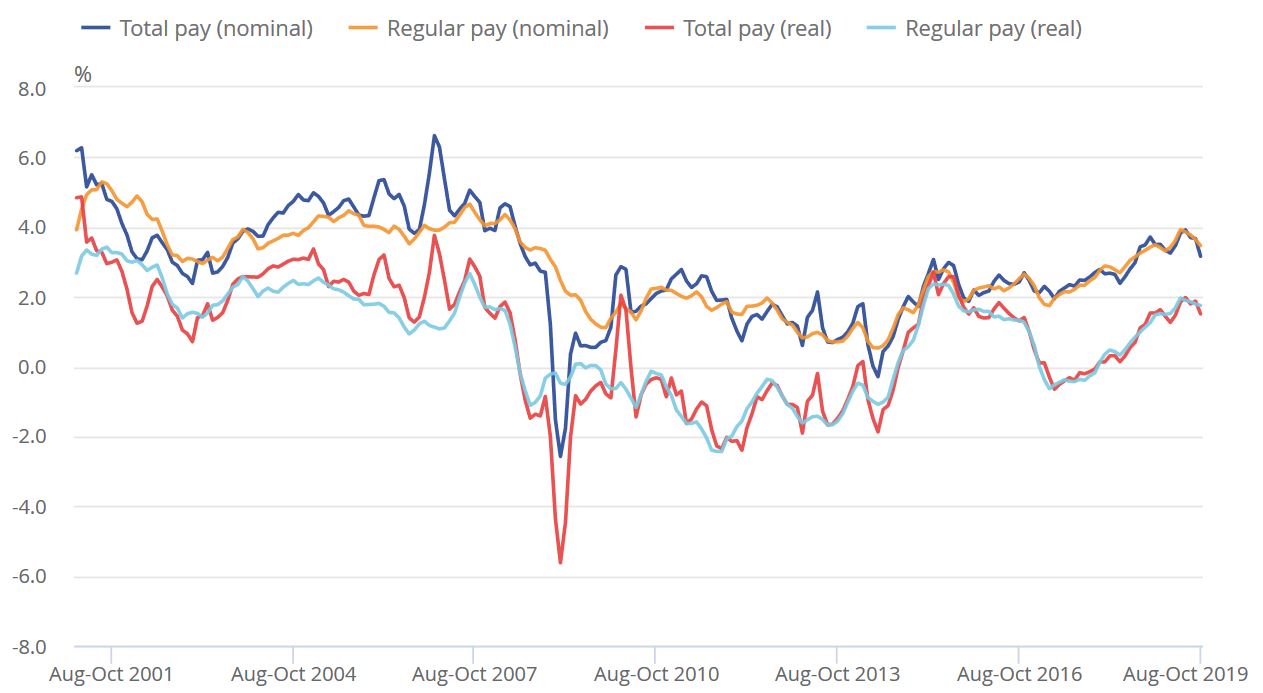ONS Labour Market December 2019
The UK labour market retained strength in the run up to the Halloween Brexit deadline, with the proportion of 16 to 64 year olds in work reaching an all-time high according to ONS data released this morning.
The number of people in employment rose to 32.8 million people in the three months to October, up by 309,000 in a year. This saw the employment rate hit a record high of 76.2% in the period, edging up 0.2% points on the previous quarter and up 0.4% points on last year.
Meanwhile, the unemployment rate stood at 3.8% in the quarter to October, down from 4.1% a year earlier. The unemployment rate for women edged down 0.4% points in the year to a record low of 3.5%, while the rate for men dipped 0.2% points to 4.0%.
The number of people aged from 16 to 64 years old that are economically inactive (not working and not seeking or available to work) was 20.8% – down 0.2% points compared to last year but largely unchanged on the quarter.
UK employment rates (aged 16 to 64 years), seasonally adjusted, January to March 1971 to August to October 2019

Source: ONS
However, in a sign that the job market may be cooling, vacancies have been in decline for ten consecutive months. There were an estimated 794,000 UK job vacancies between September and November – down 20,000 on the previous quarter and 59,000 fewer compared to the previous year. This represents 2.6 job vacancies per 100 employee jobs across the economy – the lowest rate in more than two years.
The retail sector accounted for around 10.7% of all vacancies in the UK in the three months to November.
Earnings slowed in the quarter to October. Average weekly earnings for employees edged down 0.1% points in the period to 3.5% for regular pay (excluding bonuses), while total pay (including bonuses) slowed to its weakest rate in more than a year at 3.2%, distorted by unusually high bonuses in October 2018.
But given the low inflationary environment, this suggests that regular pay in real terms (adjusted using the latest available CPI inflation) is growing at a robust 2.0%.
Great Britain average weekly earnings annual growth rates, between January to March 2001 and August to October 2019, seasonally adjusted

Source: ONS
For October 2019 in nominal terms (that is, not adjusted for price inflation):
- average regular pay (excluding bonuses) for employees in Great Britain was £510 per week before tax and other deductions from pay, up from £494 per week for a year earlier
- average total pay (including bonuses) for employees in Great Britain was £542 per week before tax and other deductions from pay, up from £530 per week for a year earlier
Back to Retail Economic News